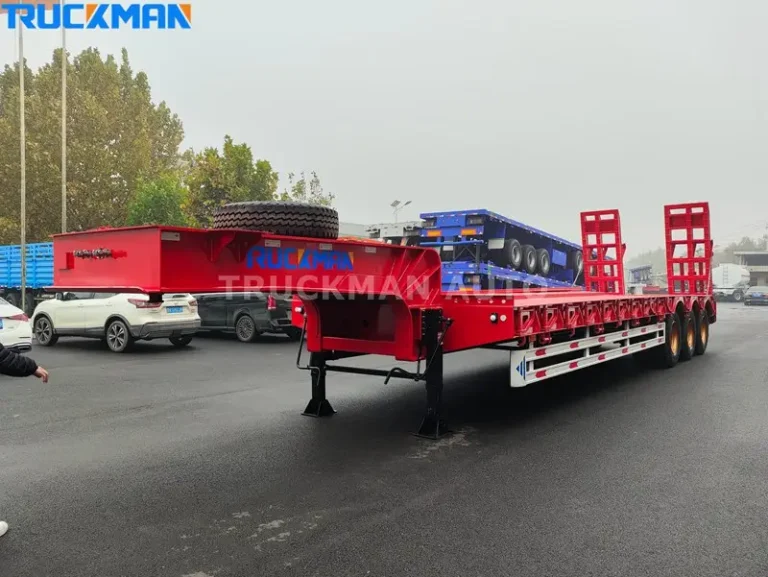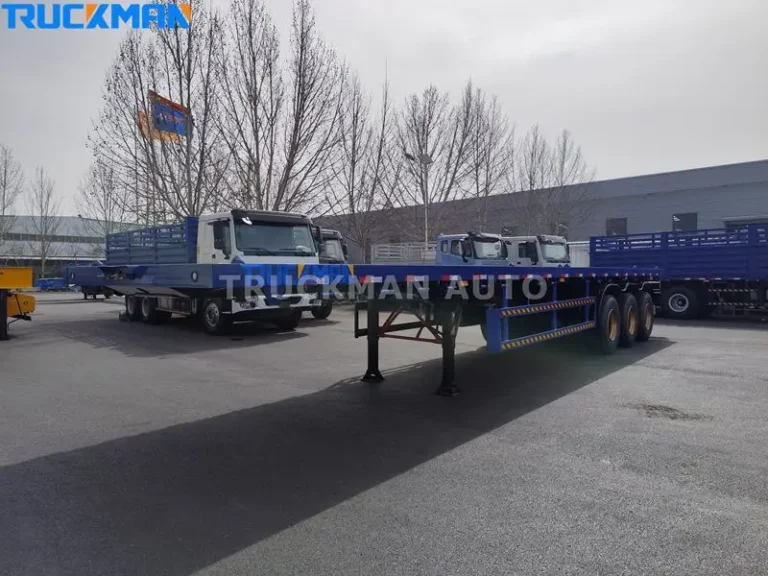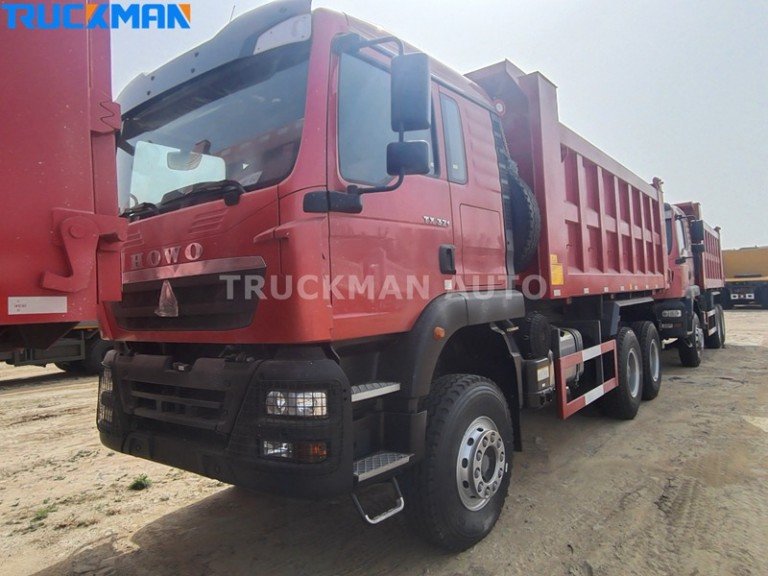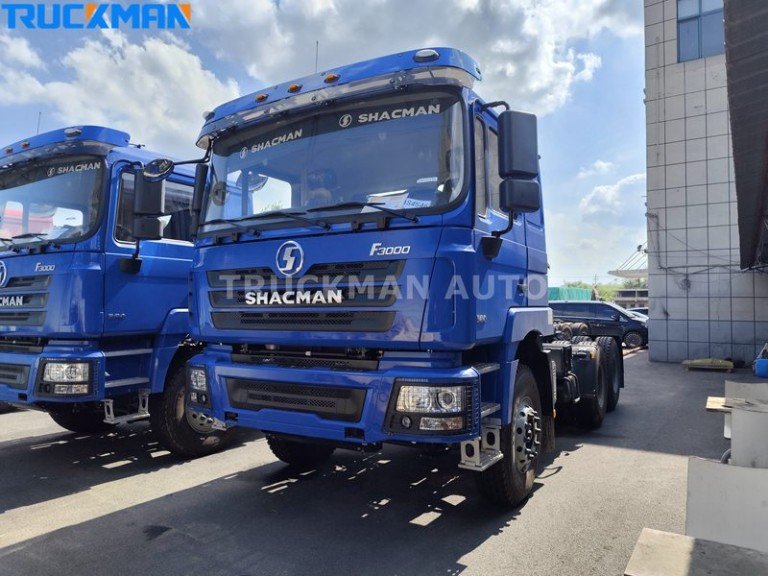Truckman Automobile is a leading manufacturer of semi-trailers, specializing in the production and sale of various gooseneck trailers. We’ve noticed a growing interest in gooseneck trailers among customers. However, gooseneck trailers are not suitable for everyone. Compared to bumper-pull trailers, they offer distinct advantages but also come with certain drawbacks.
Choosing the right trailer for your towing needs is key. Gooseneck and trailers offer stability and easy maneuvering. Yet, they also have challenges, especially when compared to bumper pull setups.
This guide will cover the pros and cons of gooseneck trailers. We’ll help you make a smart choice. With our knowledge in making trailers, we’ll explain gooseneck technology and its impact on your towing experience.
Table of Contents
Understanding Trailer Types: Gooseneck vs. Bumper Pull
Towing needs vary, and knowing the difference between gooseneck and bumper pull trailers is key. The main difference is in their design and function.
What is a Gooseneck Trailer?
A gooseneck trailer has a unique arched neck at the front. It’s hitched in the bed of a pickup truck with the tailgate closed. This design offers a stable and secure connection, perfect for heavy-duty hauling.
What is a Bumper Pull Trailer?
A bumper pull trailer has a simple straight tongue and coupler. It hitches to the bumper of a vehicle. This design is straightforward and works well for many vehicles, including cars, vans, SUVs, and trucks.
Knowing these differences is vital for picking the right trailer for your hauling needs. It ensures a safe and efficient towing experience.
The Hitching Mechanism: Key Differences
The type of hitch used greatly affects the towing experience. It’s important to understand the differences between gooseneck and bumper pull hitches.
Gooseneck Hitch Installation and Requirements
A gooseneck hitch is installed under the truck bed, centered above the rear axle. This provides optimal weight distribution and stability. Installation often requires professional help and modifications to the truck bed. Many service bodies and pickup flatbeds come with gooseneck hitches already installed. But, they can be installed at any time if needed.
Bumper Pull Hitch Simplicity
On the other hand, bumper pull hitches are attached to the bottom rear of the vehicle’s frame. This makes installation simple. The hitch mount and ball connect to a square-shaped receiver tube under the bumper, needing less modification to the towing vehicle. This simplicity makes bumper pull hitches appealing for those looking for an easy towing solution.
Towing Capacity and Load Distribution
Towing capacity is crucial when choosing a trailer. The type of trailer affects how much weight you can safely tow. Understanding the towing capacity differences between gooseneck and bumper pull trailers is key for safe and efficient hauling.
Maximum Weight Capacity Comparison
Gooseneck trailers can handle much heavier loads than bumper pull trailers. They can tow up to 30,000 pounds or more. Bumper pull trailers, however, usually max out at 20,000 pounds. This difference comes from the design and weight distribution of each trailer type.
How Weight Distribution Affects Performance
Gooseneck trailers put weight directly over the truck’s rear axle. This improves towing performance. It makes acceleration, braking, and handling better, especially on tough roads.
Good weight distribution is key for control and stability when towing heavy loads.
Stability and Safety Considerations
Stability is crucial for safety when towing. Gooseneck and bumper pull trailers have different effects on stability.
Gooseneck Stability Advantages: Gooseneck trailers are more stable due to their weight distribution. This design reduces sway and improves control, especially in windy conditions or on winding roads. The trailer’s weight is directly above the rear axles, enhancing stability.
Bumper Pull Stability Challenges: Bumper pull trailers can sway more because they’re attached behind the vehicle. This can make towing less safe, especially in bad weather. Using stabilizing accessories can help improve stability.
Maneuverability and Handling: Choosing between a gooseneck and a bumper pull trailer depends on maneuverability and handling. The towing experience is greatly affected by how easy and safe a trailer is to maneuver.
Turning Radius Differences: Gooseneck trailers can turn sharper and are more drivable than bumper pull trailers. Their hitching mechanism allows for tighter corners. However, mastering gooseneck turns may take practice.
Backing Up and Parking Challenges: Backing up both gooseneck and bumper pull trailers is tricky. Goosenecks require more practice for backing up. Bumper pull trailers are easier to back up but may struggle in tight spaces.For both, align the vehicle and trailer before backing up. Use a spotter when you can. Knowing the challenges of each trailer helps in crowded areas or construction sites.
What are the disadvantages of a gooseneck trailer?
Gooseneck trailers have benefits but also drawbacks. It’s important to understand these disadvantages before deciding if a gooseneck trailer is right for you.
Higher Initial Cost: One major drawback of gooseneck trailers is their higher initial cost. This includes the trailer’s price and the cost of a specialized hitch. This can be a big factor for some buyers.
Truck Bed Space Limitations: Installing a gooseneck hitch takes up a lot of space in the truck bed. This makes it hard to use the truck for other tasks. It’s a big drawback for those who need their truck for many things.
Vehicle Compatibility Restrictions: Gooseneck trailers need a pickup truck with enough towing power. SUVs and other vehicles can’t safely tow them. This means you need a specific truck, which can be a big problem.
In conclusion, while gooseneck trailers have good points, their high cost, limited truck bed space, and vehicle restrictions are big downsides. Thinking about these points helps you decide if a gooseneck trailer is right for you.
Advantages of Gooseneck Trailers
Gooseneck trailers are great for heavy-duty tasks. They can handle heavy loads and are very stable.
Superior Weight Capacity: Gooseneck trailers can carry loads over 30,000 pounds safely. This is perfect for moving heavy equipment or lots of goods.
Enhanced Stability for Heavy Loads: Gooseneck trailers are very stable, especially with heavy loads. They place the load over the truck’s rear axle, reducing sway. This makes towing safer.
Benefits of Bumper Pull Trailers: Bumper pull trailers are popular for their low cost, versatility, and ease of use. They’re great for lighter loads and perfect for beginners.
Cost-Effectiveness: Bumper pull trailers are cheaper to buy and maintain than gooseneck trailers. They’re a good choice for those on a budget or new to trailers.
Versatility and Convenience: Bumper pull trailers can be towed by many vehicles, including SUVs and cars. They’re easy to hitch and store, making them convenient.
Gooseneck vs. Fifth Wheel
Gooseneck and fifth wheel trailers are often mixed up. But they differ in how they hitch and their towing capacity. They serve different needs.
Hitching Mechanisms Compared: Fifth wheel hitches have a jaw-and-kingpin system for a strong connection. Gooseneck trailers use a ball-and-coupler system. This affects their stability and how easy they are to maneuver.
Weight Capacity and Applications: Fifth wheel trailers can carry 16,000 to 30,000 pounds. Gooseneck trailers can handle even more. Fifth wheels are often used for RVs, while goosenecks are better for heavy hauling.
Choosing the Right Trailer for Your Needs
Choosing the right trailer depends on your vehicle and hauling needs. Knowing what you need helps pick the right trailer for you.
Assessing Your Towing Vehicle
It’s important to check if your towing vehicle can handle a bumper pull or gooseneck trailer. The towing capacity of your vehicle is key. It tells you the maximum weight you can tow safely.
Consider your vehicle’s weight, engine power, and cooling system. Also, think about its braking capacity. These factors help you choose the right trailer type.
Evaluating Your Hauling Requirements
Think about what you’ll be hauling and how much. The type and volume of cargo guide your trailer choice. Consider the load’s weight, size, and how often you’ll use it.
Also, think about special needs like transporting livestock or living quarters. Matching your needs with the right trailer type is key. This helps decide between a gooseneck or bumper pull trailer.
Conclusion
Understanding the differences between gooseneck and bumper pull trailers is key. Both have unique features and performance. They meet different hauling needs.
The right choice depends on your vehicle, load, and budget. At Truckman Automobile, we make high-quality Removable Gooseneck Trailer.
Consider the pros and cons of each trailer type. This helps you make a choice that fits your needs. For more info, contact our team.
FAQ
What are the main differences between a gooseneck trailer and a bumper pull trailer?
The main difference is in their hitching and weight distribution. Gooseneck trailers connect to the truck bed for better stability. Bumper pull trailers attach to the bumper or frame for ease of use.
How does a gooseneck hitch affect my truck’s bed space?
A gooseneck hitch takes up a lot of truck bed space. This limits other uses of the bed. It’s a drawback for those needing the bed for other purposes.
Are gooseneck trailers more stable than bumper pull trailers?
Yes, gooseneck trailers are more stable, especially when hauling heavy loads. This is because their weight is spread over the rear axle of the towing vehicle. This makes them less likely to sway and improves towing safety.
Can I use a bumper pull trailer with any vehicle?
Bumper pull trailers are more versatile. They can be towed by various vehicles, including smaller trucks and SUVs. Just make sure the towing capacity isn’t exceeded.
What are the advantages of a gooseneck trailer’s weight capacity?
Gooseneck trailers have a superior weight capacity. They are perfect for heavy-duty hauling. This is great for transporting large or heavy loads, like livestock or heavy equipment.
How do I choose between a gooseneck and a bumper pull trailer?
Choosing between a gooseneck and a bumper pull trailer depends on your needs. Consider the cargo type, towing vehicle, and personal preference. Think about weight capacity, stability, and maneuverability when deciding.
Are there any specific maintenance requirements for gooseneck and bumper pull trailers?
Both types of trailers need regular maintenance. This includes tire checks, brake inspections, and hitch maintenance. Gooseneck trailers might need more frequent checks because of their complex hitching mechanism.
Can I convert a bumper pull trailer to a gooseneck trailer?
In some cases, converting a bumper pull trailer to a gooseneck trailer is possible. But it requires significant modifications, like changes to the trailer’s frame and hitch. Always consult a professional before trying such a conversion.






